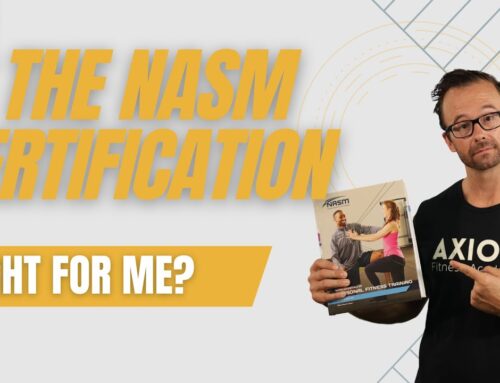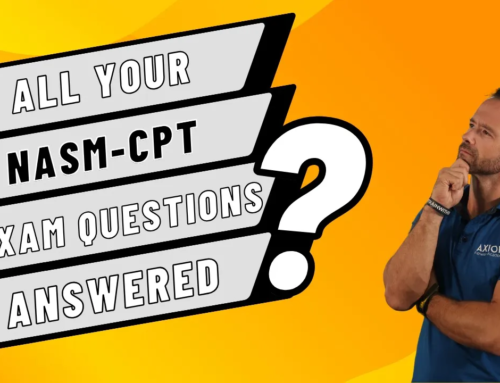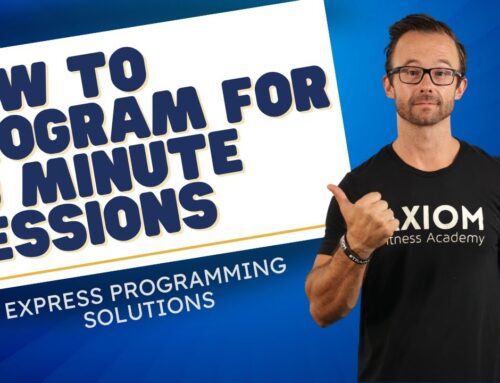The need for top level coaches and personal trainers has never been greater.
Maybe you have gone through your own transformation and want to be able to share that with others or maybe you have been an athlete your entire life and being in the gym has become part of your identity.
Even in today’s climate and current shifts in consumer behavior, the world’s focus on health and wellness continues to drive growth in the fitness and personal training industry.
Checkout the graphic below for some hard numbers on potential income for fitness professionals and where the industry seems to be trending.
How to Get Started – Path to Certification
Identifying the opportunity is one thing, but choosing your route to getting started is another. More than 90% of personal trainers drop out of the industry within twelve months, but we’re convinced it’s because they are choosing the wrong entry point.
There are a number of possible routes to getting started in the industry (see below). There are trainers who have found their way to success in each of them, but currently there is no industry standard that will guarantee you a long and successful career. The best you can do is understand the benefits and drawbacks to each and pursue the one that best fits you and what you need to thrive.
Option #1 – Home Study Course
In the past, this is how most personal trainers have gotten started. Study from a book, go take a test, and get started. It’s definitely less expensive (initially) than the other options available, but probably also the one that contributes the most to industry turnover. Low entry point isn’t a bad thing because it means that those who are motivated to get started and making an impact can do so relatively quickly. The downside is a lack of guidance and hands-on experience to increase chances of success.
Those who are super determined, driven, and great self-teachers can still find success here, but the route itself may have the highest failure rate when it comes to career longevity.
Going with an inexpensive and quick certification can seem like the best answer at the time, but may lead to learning less up front, making less money, and a lack of connection/mentorship that many new coaches absolutely need to navigate their way in the first few years.
Option #2 – Hands-On Course
This route requires a little more up-front financial commitment, but pays big dividends in your speed to execution. Going from a passionate fitness enthusiast to a knowledgeable coach that people want to follow is no easy task. A hands-on guided course will likely not only allow you to better learn and apply the anatomy and physiology required to pass, but also deliver a sense of connection and mentorship in the process.
The benefit of learning from other trainers and coaches that have been there is shown in the time span it will likely take to reach full-time work and income. Time collapsing the experience and mistakes of others is always a likely path to prosperity. Memorizing the information is one thing, but understanding how to use it and apply it within the systems of a successful personal training business is another.
*Pro Tip: Look for a course or academy that is taught by experienced Fitness Pros who have themselves built successful followings and businesses in the world of Personal Training.
Option #3 – Get A 2-Year Degree
Associates Degrees and trade schools in the fitness industry have been becoming more popular and can be a good approach for the right student. However, they do require an exponentially greater financial commitment than study-at-home or shorter hands-on courses. This can be a good route for veterans who are looking for a new direction in life after service and have access to the G.I. Bill for educational funding or those that prefer a more traditional education experience.
The data out there points to a slightly higher potential yearly income for personal trainers with higher levels of education, but truthfully, the correlation is not a strong one and the increased income potential may not be worth the large initial investment for those who really just want to work with clients in non-medical settings.
Higher levels of education may be required for those who want to work in collegiate settings, the medical world, and in the educational side of the industry, but may or may not pay off in the end for those crafting a career in personal training alone.
It would seem that the connection between higher levels of education income are likely more tied to the inherent commitment that those individuals have to their purpose and career. Meaning, those that are willing to do what it takes to reach success are less likely to need a more formal collegiate education.
Option #4 – Bachelors Degree In Exercise Science
This is by far the most traditional and costly option to getting into the fitness industry. This route will unlock some additional doors down the road for those who want to do more in the industry than only work with clients in-person. An associates degree (above) or bachelors, for example, may be more desirable in pursuit of management positions or allow for an experienced trainer to be more accepted into the educational side of the industry.
It may also boost your credibility with higher socioeconomic clientele who value higher level education and are willing to pay more for it. However, a degree is still not tied directly to one’s ability to succeed quickly or get started in the industry.
Younger individuals who are looking to have a traditional college life experience may find this to be a good option and a solid foundation for really learning a new level of depth when it comes to anatomy and physiology. Not to mention, certain higher level certifications like the NSCA Certified Strength and Condition Specialist (CSCS) require a degree for eligibility.
Some programs do include an amazing hands-on training component, but that’s not always the case. So, it’s important to research each school thoroughly. If this is a route that interests you then speak with instructors and former students to find out a lot more about the courses offered, to ensure they offer the opportunity for extensive practical and not just theoretical experience with movement.
How To Choose Your Path
It’s hard to know exactly what potential is out there and what direction you are going to want to go when you’re just getting started, but your entry point matters. It has to speak to you – and make financial sense.
FIRST Look at it as an investment. How long will each route take for you to recoup the money and time that you put in to accomplish it? In simple terms, how long will it take for you to actually be making great money and how comfortable are you with that timeline?
Research done by the Personal Training Development Center showed a relationship between education and income for those making between $100k and $150k in fitness – but not for those making $150k+. So how big are your aspirations and what will really propel you there?
SECOND Choose the route that speaks to your personal identity, learning style, and intrinsic motivation. Can you really learn all of the material on your own and be a great self-teacher or will you do better with having a guide and mentor in the process? Do you need the structure of traditional classes or are you the kind of person who prefers to learn and gain experiences on your own?
Both can be successful and there are thousands of examples of each working in the industry right now.
THIRD How much connection do you crave? If you prefer to network and share ideas with like-minded people, then you certainly should consider an option that allows you to do so.
If you’re lucky, you will find a great school or facility where they groom and develop great coaches but make sure you meet the staff and investigate their track record.
If you prefer to do things on your own, like finding your own job or seeking out getting help when needed, then self-study may be a viable option.
Regardless of the route you choose, the world needs you and we want to help you get started. Our advisors are industry professionals with years of experience in all facets of fitness who want to answer your questions and get you pointed in the right direction.
Need more help? Click here to schedule an advisory call to discuss your options.








